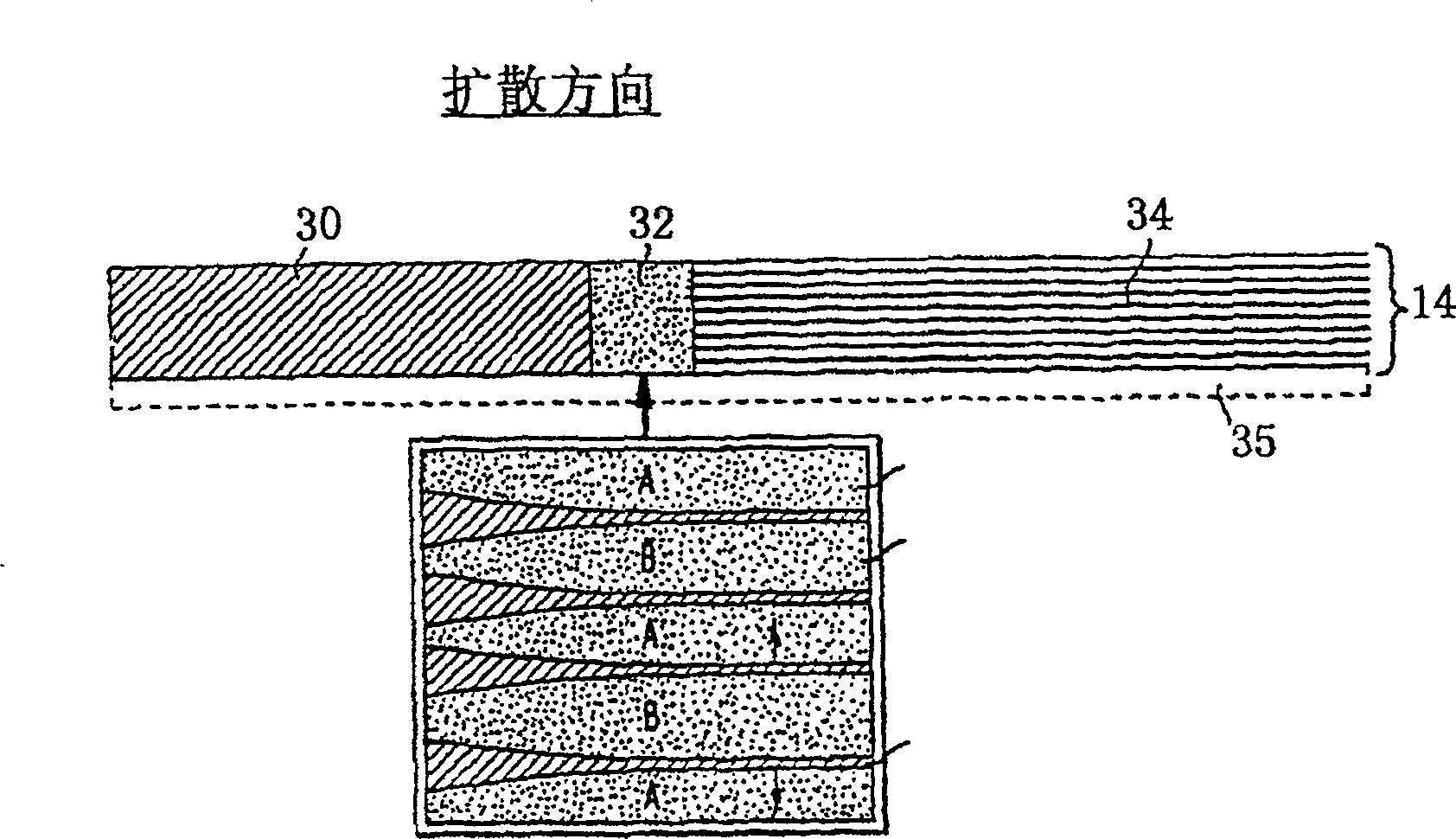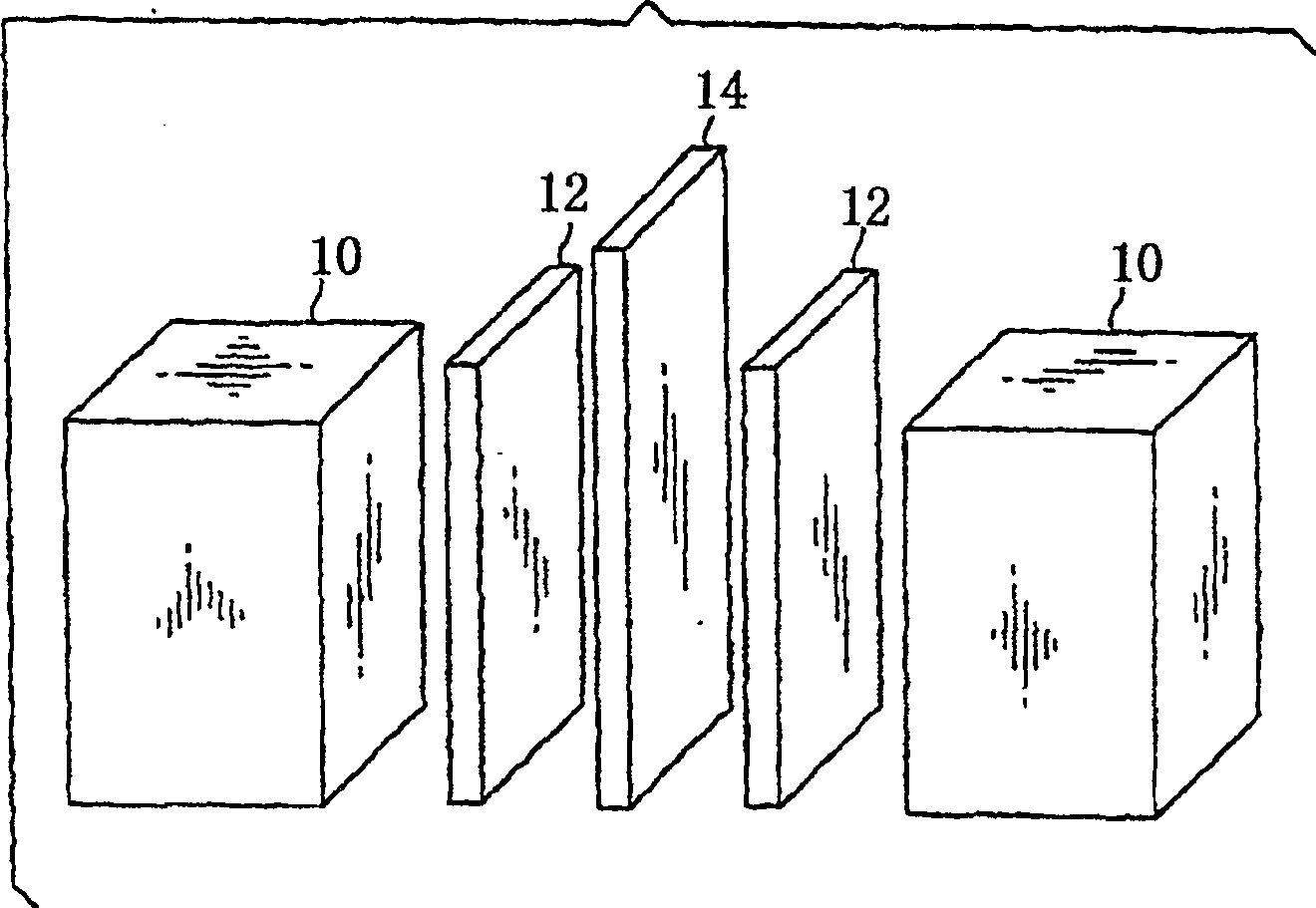Composite reactive multilayer foil
A thin, reactive technology, applied in the field of freestanding multi-layer thin sheets, which can solve the problems of detachment, failure to successfully combine, and material difficulties.
- Summary
- Abstract
- Description
- Claims
- Application Information
AI Technical Summary
Problems solved by technology
Method used
Image
Examples
example 1
[0067] The reactive flakes of aluminum and nickel were formed by cold rolling a number of 5 μm nickel and aluminum flakes stacked together. Figure 6 Stack 61 is shown passing through press rollers 62A and 62B to make sheet 60 . The sheet can be cold rolled several times until the thickness of the layers is reduced to the desired value.
example 2
[0069] Rather than using a sheet composed of multiple layers of the same thickness, a composite sheet is used, where responsive multilayers of nanolayers are deposited on reactive microlayer sheets. Such as Figure 7 As shown, some portions of the layer 70 in the reactive flake 71 will be nanoscale (nanolayers) and other portions 72 will be micron-thick layers (microlayers). As noted above, the nanolayer will readily react and once the reaction begins, will self-diffuse along the length of the sheet without being snapped by melting of surrounding brazing layers or loose components. Thus, nanolayers can be considered as igniters of microlayers. The portion 72 with the microlayers cannot sustain a self-diffusion reaction at room temperature, but when heated by the adjacent nanolayer portion 70, it will maintain the reaction. The flakes may consist of alternating layers of aluminum and nickel.
example 3
[0071] In making these composite sheets, sheets of aluminum and nickel are calendered to form microlayer sections, and then nanolayer sheets are vapor deposited on either surface of the microlayer structure. Fabrication can also be done by vapor deposition of the entire composite, where microlayers are deposited at a higher rate without igniting the flakes or causing unacceptable mixing in alternating layers during deposition.
PUM
| Property | Measurement | Unit |
|---|---|---|
| Thickness | aaaaa | aaaaa |
| Thickness | aaaaa | aaaaa |
Abstract
Description
Claims
Application Information
 Login to View More
Login to View More - R&D
- Intellectual Property
- Life Sciences
- Materials
- Tech Scout
- Unparalleled Data Quality
- Higher Quality Content
- 60% Fewer Hallucinations
Browse by: Latest US Patents, China's latest patents, Technical Efficacy Thesaurus, Application Domain, Technology Topic, Popular Technical Reports.
© 2025 PatSnap. All rights reserved.Legal|Privacy policy|Modern Slavery Act Transparency Statement|Sitemap|About US| Contact US: help@patsnap.com



